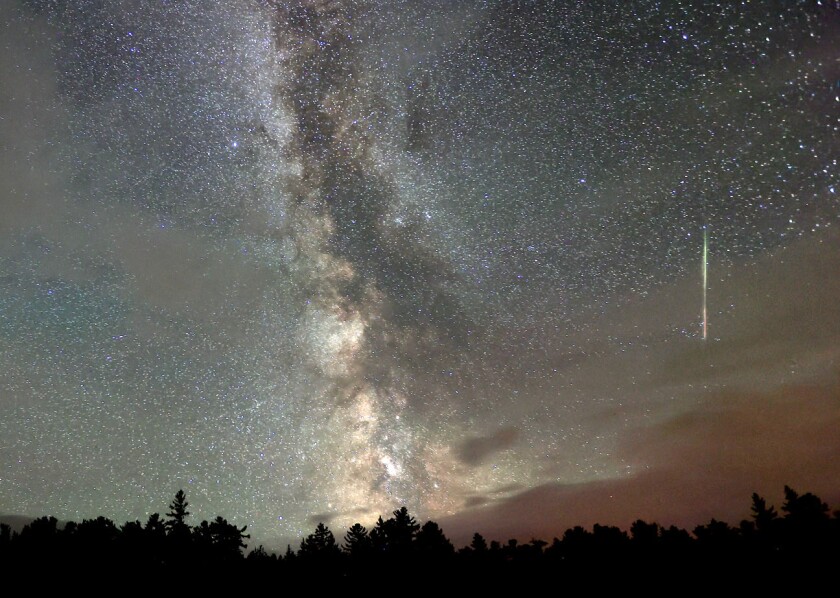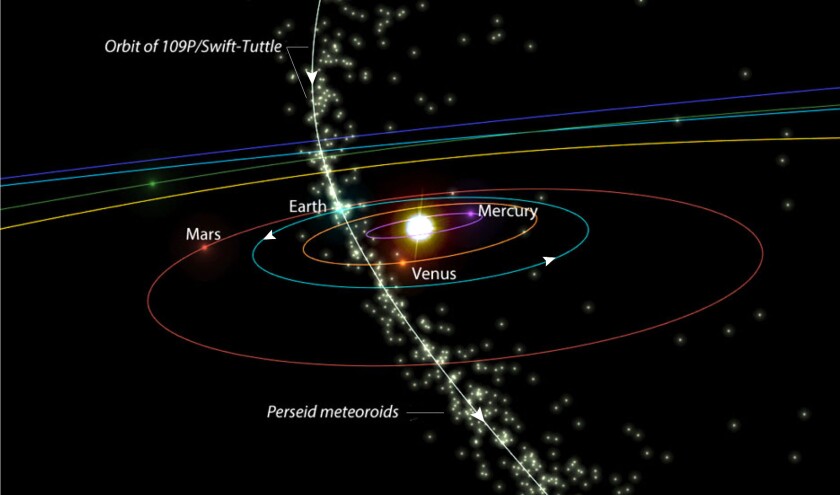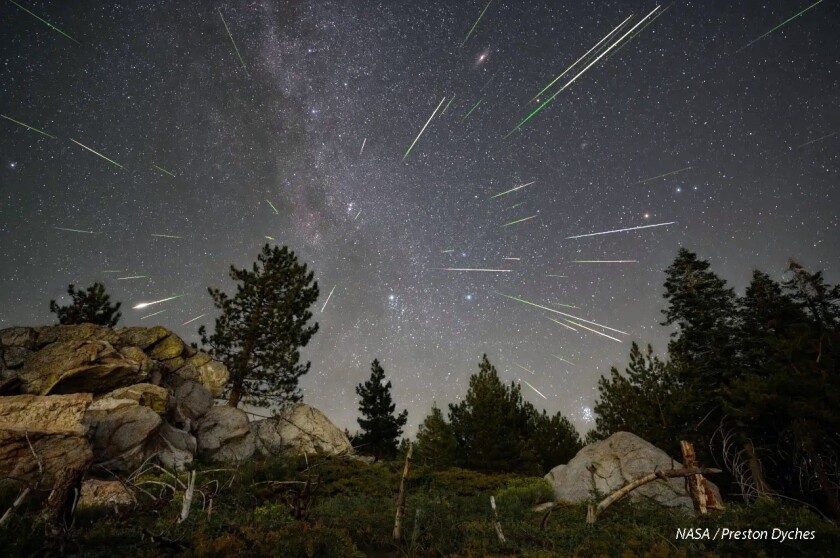Let's hope for clear skies Sunday night through early Monday morning, Aug. 11-12, so we can partake in one of the year's richest meteor showers.
Sometimes a bright moon will take away from the Perseids, but that won't happen this time around. The moon will be near first quarter phase (not too of a glare) and set around 11 p.m. local time before the shower peaks, which usually happens after midnight.
ADVERTISEMENT
Not that you have to wait that late to see meteors. As soon as it gets dark the game will be afoot. Just know that Perseus, where the meteors stream from, will still crouch low in the northeastern sky during early evening hours, so you won't see nearly as many compared to later when the constellation (and radiant) are much higher up. I usually burn the candle at both ends — poke around the sky early to get a sense of the shower and then set my alarm for 2 a.m. and watch until 4.

Perseid meteoroids — the name given to the particles before they flash before our eyes as meteors — slam into the Earth's atmosphere at around 133,000 mph. Most are only sand-grain-sized, but the ones that make the brightest streaks are the size of peanuts or chocolate chips. An incoming meteoroid compresses the air along its path, which generates enough heat to vaporize the minerals it's made of and excite air molecules during its flight to radiate light. This brief but intense episode produces a swift streak of light called a meteor or "shooting star."

The particles originate from comet , which orbits the sun every 133 years. It last passed Earth's vicinity in 1992 and will again in 2125. At each flyby, heat from the sun vaporizes some of the comet's dust-rich ice, expelling particles along its orbital path. Fortuitously, Earth's orbit intersects Swift-Tuttle's track. Every year around Aug. 10-13, we pass through the densest part of the debris stream and the particles flare overhead in a meteor shower.

Meteor showers are different from rain showers when it comes to rate of fall. We don't generally see a steady "downpour" of meteoroids except on rare occasions. It's more of a drip-drip-drip. You might see three meteors closely spaced in time followed by a gap of several minutes when nothing happens at all. Photos that show a "shower" of meteors are composite images, where the photographer has taken multiple images across many hours and "stacked" them on top of each other.
Although the published rate for the Perseids is around 100 meteors per hour, that's only true in an idealized setting. Viewers under a reasonably dark sky, say in the fringe suburbs, will see closer to 20 to 50 per hour. If it's cloudy during shower maximum, go out the next night. You'll still see good activity.
One of the fun things about the Perseids is how little equipment you need — just your eyes and a comfortable reclining chair. Face the darkest direction (and away from the moon) for the best view. Also, keep an eye out for aurora in the northern sky. There's a chance it may piggyback on the shower!
Spend an hour with the shower. During lulls you can enjoy looking up at the stars and Milky Way, which stretches high across the southern sky in August. Or listen to the night sounds — owls, katydids, crickets and maybe the quiet words of wonder exchanged between family members and friends.






